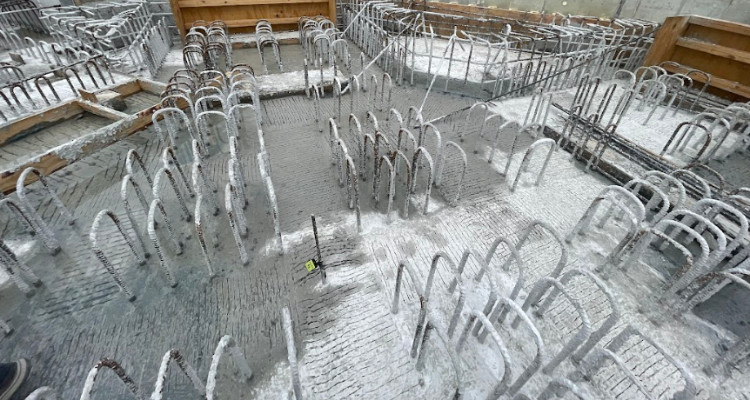Mass pours & Thermal Control Plan
Developer
January 17, 2024

ENSURING SUCCESSFUL MASS CONCRETE POURS
A thermal control plan for mass concrete pours is crucial to ensure that the early-age concrete is curing under favorable temperature conditions. By monitoring the in-place temperature of both, the core and surface of a concrete mass placement, General Contractors are able to determine if the concrete mix is curing properly. However, mass concrete pours are expensive and challenging to orchestrate because of two reasons:
Concrete elements made with large volumes of concrete tend to retain in their core some of the heat generated during the hydration of the water content, which can lead to thermal cracking of structures and other concrete quality issues. In concrete mass pours, the retention of heat at the core, during the hydration process, accelerated the concrete expansion as the water evaporates. On the other hand, the surface of a concrete mass placement is affected by ambient temperature, which can influence the hydration process as well. These discrepancies between the temperature at the surface and the core of mass placement can generate tensile stresses and if it is high enough, the concrete will crack.
The second reason why concrete mass pours are challenging to perform is because the extra heat generated at the core can elevate the temperature and influence the rate of hydration, which results in low breaks, pores, and/or honeycomb in the concrete structure. Some state DOTs require General Contractors to provide thermal control plans for bridges, highways, and road construction to ensure that the temperature differentials between the core of mass placement and its surface is never high enough to cause the cracking of the structure.
To mitigate these risks, General Contractors working with the DOT projects have made use of thermocouples and data loggers for monitoring the internal temperature of concrete mass pours. However, these outdated methods do not provide real-time temperature features to their users. The good news is that wireless IoT sensors like SensyRoc can bring peace of mind to General Contractors because of their ability to provide an interrupted and continuous monitoring of the temperature factor to ensure the concrete is curing under favorable temperature conditions.
IoT concrete sensors are becoming an essential tool for General contractors working with DOT projects where mass concrete pours are challenging because of extreme weather conditions. Wireless concrete sensors like SensyRoc are becoming a new industry standard for concrete testing because of their accuracy and ability to give users an easy-to-understand graphical display of the condition of their concrete pours in a fraction of the time versus standard testing done by others.



